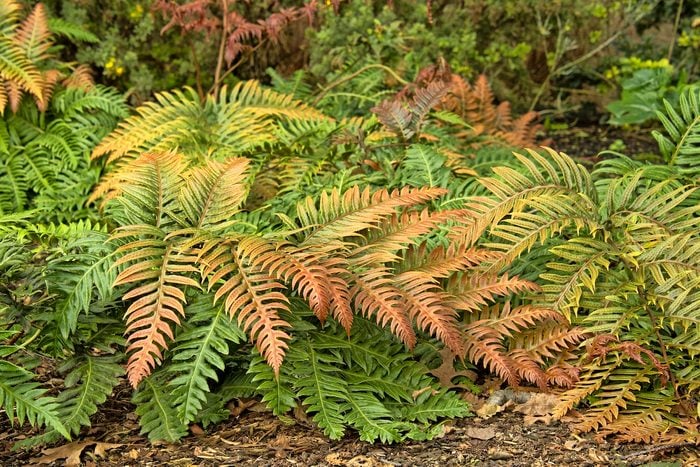
Add Garden Texture with Ferns
Thriving in full to part shade, ferns flourish where many other plants struggle. “Most of them have such a fine texture,” says Alan Branhagen, director of operations at the Minnesota Landscape Arboretum. “Few other plants have such delicate, intricate leaflets and divided-up fronds—ferns just create a lot of interest and detail.”
Don’t miss the top 10 shrubs for shade gardens.
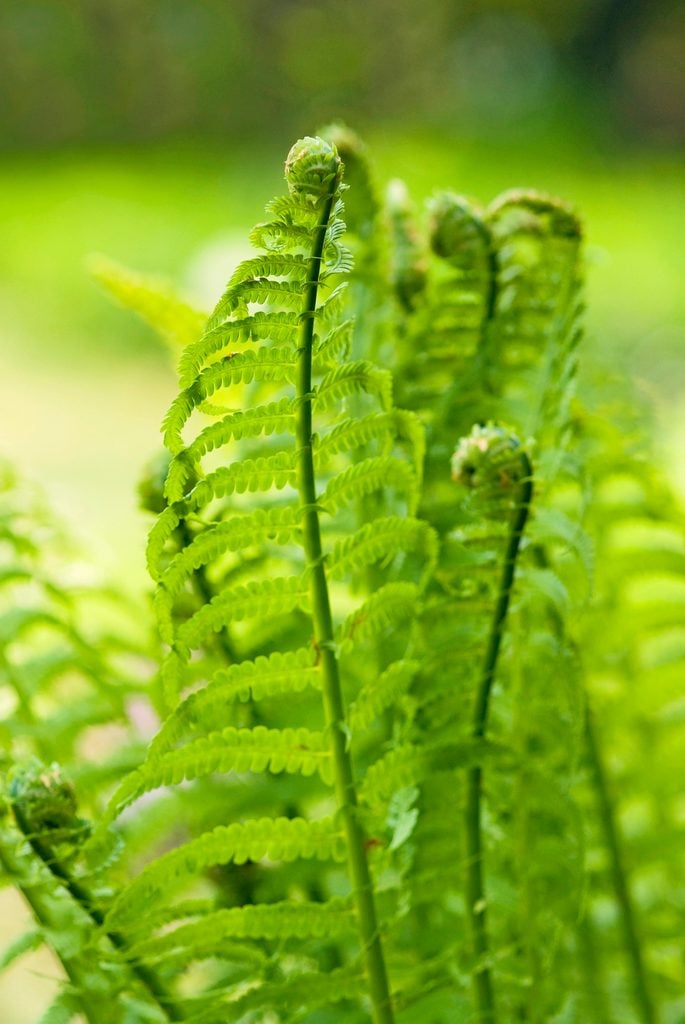
Use Ferns to Give Wildlife a Boost
As a naturalist with an interest in botany, butterflies and birds, Alan appreciates the main benefit that ferns provide to wildlife. “Ferns don’t produce seeds or anything that birds eat,” he says, “but they provide good habitat for soil invertebrates and, in that respect, they are really good in a woodland garden for ground-feeding birds.”
He notes that he sometimes sees warblers hopping around on the forest floor under ferns. “A lot of our thrushes—from robins to the migrant thrushes that go up north—really like that sort of habitat to scratch around in,” Alan says.
Check out 10 hummingbird plants that grow in shade.
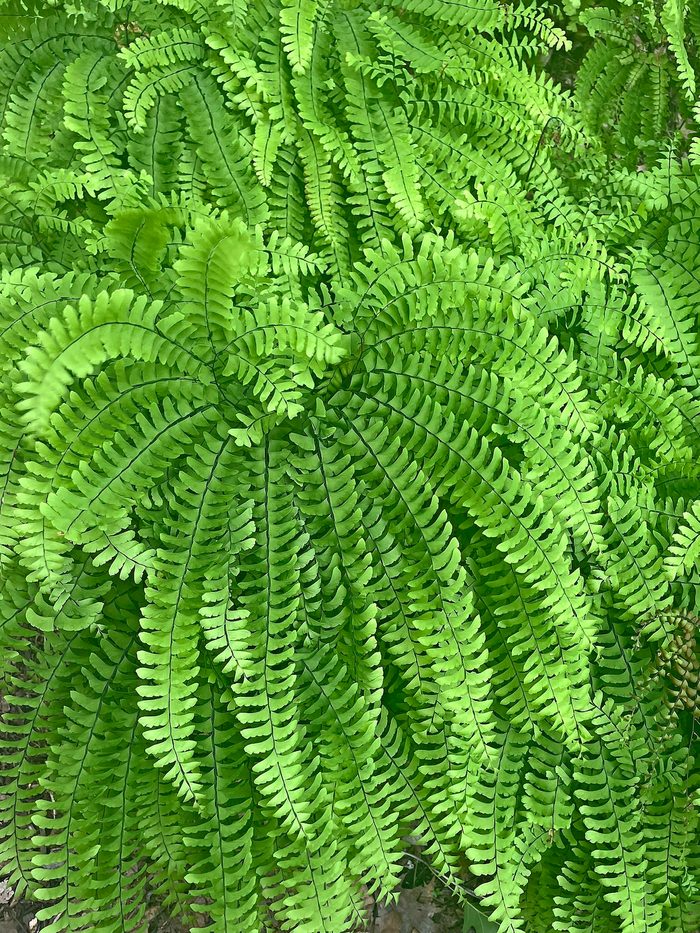
Fern Care
To maximize the value of deciduous ferns, let their foliage die back on its own. “They don’t have big twiggy stems, so they compost themselves pretty readily,” says Alan. After a freeze, he suggests letting ferns become mulch, which will support earthworms, spiders and other helpful garden critters.
Deer occasionally browse on ferns, but not as their first choice. Slugs and insect pests aren’t normally a problem either.
“Ferns are pretty low maintenance,” Alan says. “They’re an ancient group of plants and they’ve been around a long, long time. There just really aren’t many issues as long as you choose a fern that is hardy for your zone and put it in conditions that it likes.”
Some other top fern care tips:
- Plant ferns in fall or early spring so they establish before the heat of summer.
- Find a shady spot. Mild morning light is fine, but their foliage burns in hot afternoon sun.
- Add compost to promote the soil’s health.
- Water well throughout their first growing season—many ferns can become drought tolerant once established.
Psst—we found even more easy-to-grow plants for your shade garden.
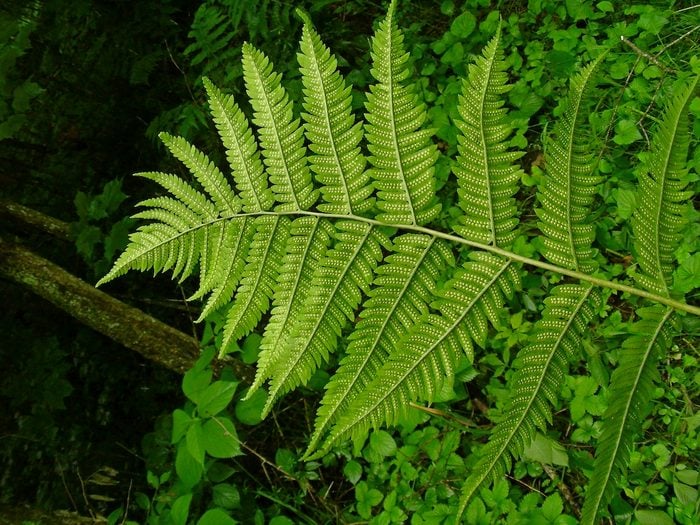
Fern Companion Plants
For the best and biggest visual effect, group ferns together in flowing designs inside a natural garden. “They pair well with azaleas in high shade or underneath small woodland trees,” Alan says.
Other fern companions Alan recommends include wood poppy, bloodroot, jack-in-the-pulpit, Canadian wild ginger and European wild ginger.
He also particularly likes planting ferns with spring ephemerals, such as Virginia bluebells. He says, “By June they are fading away, and that’s when the ferns come up and fill the space.”
Check out these early blooming spring flowers for your garden.
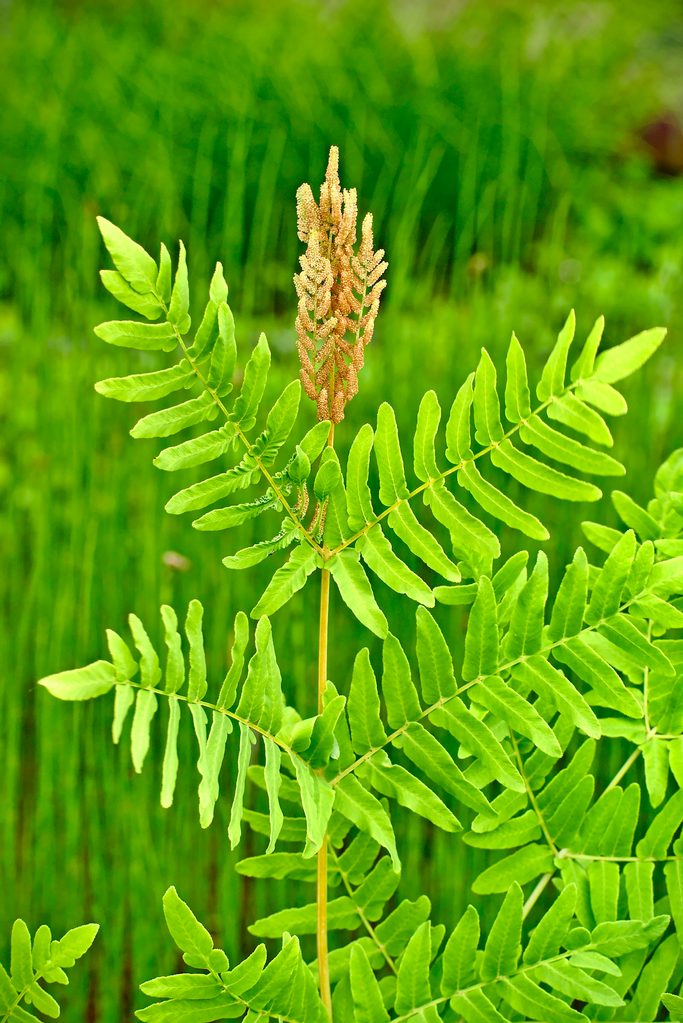
Large Types of Ferns
Carefully choose types of ferns to fit your available space. Here are some of Alan Branhagen’s recommendations for large ferns.
- Royal fern (Onoclea struthiopteris), Zones 3 to 10. This native plant thrives in partially shaded areas that tend to have wet soil.
- Giant wood fern (Dryopteris goldieana), Zones 3 to 8. It grows 3 to 4 feet tall, and looks fantastic as a specimen plant or massed in woodland gardens along ponds or streams.
- Interrupted fern (Osmunda claytoniana), Zones 3 to 8. Typically 3 or 4 feet tall in most gardens but can tower to a dramatic 6 feet when it’s happy.
- Ostrich fern (Matteuccia struthiopteris), Zones 3 to 8. Make a big garden statement with this 3-to-5-foot-tall giant of the fern world.
Grow New Guinea impatiens for color in shade.
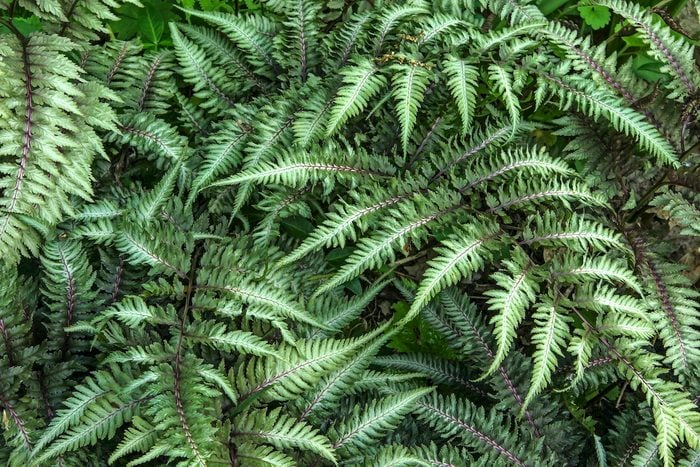
Small Types of Ferns
- Japanese holly fern (Cyrtomium falcatum), Zones 6 to 10. It’s rarely more than 2 feet tall and has particularly shiny evergreen leaves.
- Japanese painted fern (Athyrium niponicum var. pictum), Zones 3 to 8. Growing just 12 to 18 inches tall and wide, its intricate patterns add a dimension of color to landscapes.
- Northern maidenhair fern (Adiantum hispidulum), Zones 3 to 8 and southern maidenhair fern (Adiantum capillus-veneris), Zones 6 to 9. Delicate and small, the leaves of these two options provide texture in a shade garden.
Next, check out the top 10 shade tolerant coral bells varieties.
